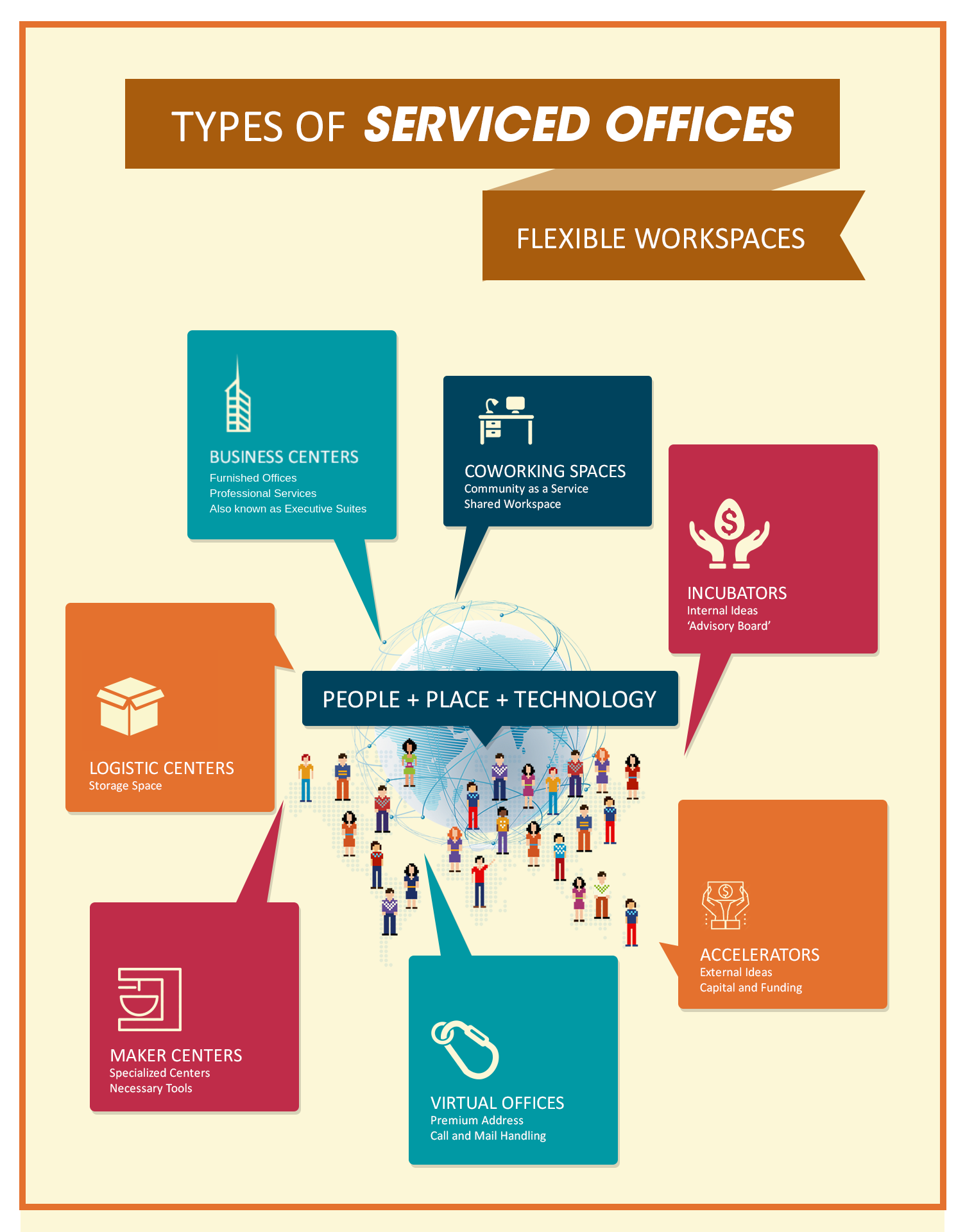One of the ways in which the serviced office industry has evolved is that it’s now more commonly referred to as the flexible workspace industry. Yes, serviced offices and flexible workspaces are one and the same industry; in fact, a serviced office is a flexible workspace.
As the name suggests, serviced offices operate under the premise that ‘offices’ are provided with ‘services’. These usually include on-site receptionist services, a management team, call and mail handling services, wifi, and so on.
Though not all serviced offices offer the same services, they’re all made up (to some degree) of people, place, and technology.
People + Place + Technology
With a wide array of serviced office types it’s become hard to define what a serviced office is. Serviced offices are like cars; there are different makes and models that attract a different client or consumer. There are sports cars, family cars, luxury cars, eco-friendly cars, etc. There are business centers, incubators, accelerators, coworking spaces, etc.
You get the idea.
Still, no matter the make or model of a serviced office, they’re all made up by a combination of the three main components mentioned above. Now, there are two ‘main types’ of serviced offices, under which the rest of types can fall into:
Business centers
A business center is usually all or part of a building in which serviced offices are housed; it’s effectively a ‘collection’ of serviced office suites, grouped together with services like administrative support, live receptionist, call and mail handling, and more.
Coworking spaces
They offer these three components as well, simply at a different ratio; their selling point is focused on the people component. Coworking centers sell community as a product that’s part of their business model.
All other serviced offices (or flexible workspace providers if you will) adopt either of these two models or create a hybrid from both, and add other components to them. For example, incubators add the mentoring component, accelerators add the capital component, logistics centers add the storage component, maker centers add specialized components (i.e. kitchen, music instruments), and so on.
Now that we’ve clarified what a serviced office is made up of (people – place – technology), let’s take a look at some of the types of serviced offices out there.



 Dr. Gleb Tsipursky – The Office Whisperer
Dr. Gleb Tsipursky – The Office Whisperer Nirit Cohen – WorkFutures
Nirit Cohen – WorkFutures Angela Howard – Culture Expert
Angela Howard – Culture Expert Drew Jones – Design & Innovation
Drew Jones – Design & Innovation Jonathan Price – CRE & Flex Expert
Jonathan Price – CRE & Flex Expert












